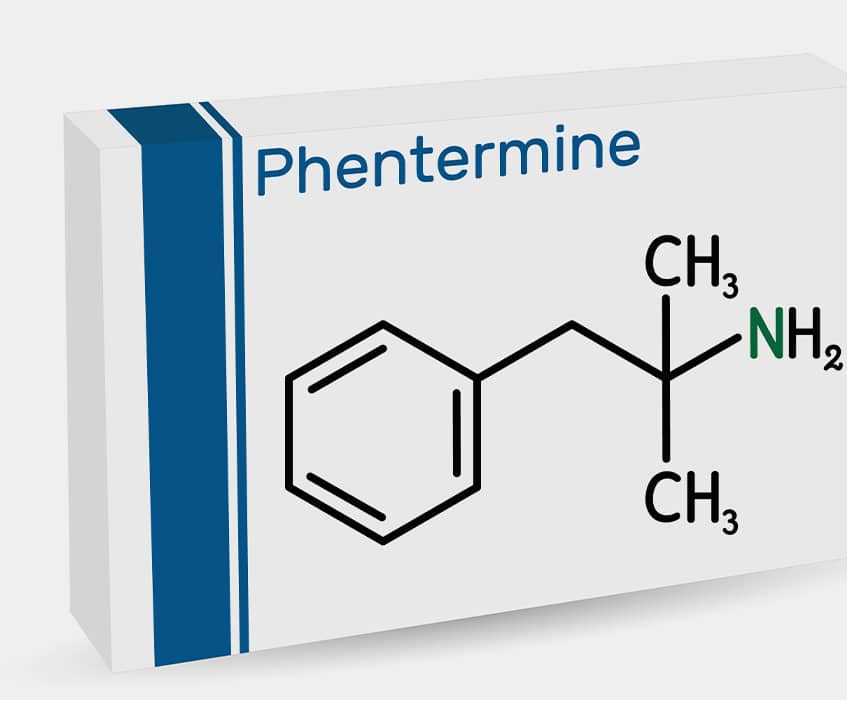

Medical Weight Loss in New York City, NJ
Did you know that more than 40% of adults in the United States suffer from obesity? Unfortunately, there is no miracle cure for this condition. Perhaps worse is that more and more adults and children are gaining weight across the country, choosing the convenience of fast and nutrition-deficient foods over healthy eating, exercise, and positive life choices. From an aesthetic standpoint, being overweight is a struggle - clothes don't fit right, people make uncomfortable comments about how you look, and everyday activities are less appealing.
From a health and wellness standpoint, however, being obese is much worse. Your life is literally on the line. The people who love you and depend on you to be in their lives could lose you sooner than you expect. With time, you have a higher chance of suffering from significant, life-changing issues such as:
- Heart Disease
- High Blood Pressure
- Diabetes
- Stroke
- ED
- Sleep Apnea
- Respiratory Issues
- More
While obesity is a serious problem, a new medication on the market is giving hope to millions of men and women across the U.S. This game-changing treatment is called Semaglutide in New York City, NJ. This anti-obesity medication is unique because it treats obesity as a chronic metabolic disease, rather than a problem that can be solved through sheer willpower. The best part? Semaglutide and other medical weight-loss peptides are now available at Global Life Rejuvenation.

- Medical Weight Loss in New York City, NJ
- Global Life Rejuvenation
- Treatment in New York City, NJ
- What is Semaglutide
- Semaglutide Therapy in New York City, NJ
- While Taking Semaglutide
- Other Peptide Therapies and Medicines for Medical Weight Loss in New York City, NJ
- MIC Injections for Weight Loss
- Phentermine for Weight Loss
- Health and Wellness Begin with Medical Weight Loss from Global Life Rejuvenation
Medical Weight Loss from Global Life Rejuvenation
At Global Life Rejuvenation, we understand that losing weight is not a one-size-fits-all approach. Our medical weight loss clinic offers custom medical weight loss plans tailored to your body, rather than plans based solely on your age or weight. In fact, our team of doctors and practitioners provides personalized guidance to help you achieve real results and live a healthier life.
Because the truth is maintaining good health and fitness are crucial in the modern world. Research has shown that viruses and diseases are more likely to affect those who are overweight and unhealthy. At Global Life Rejuvenation, we take a comprehensive, custom approach to medical weight loss that includes peptide therapy and more. We then work with you to make positive lifestyle changes, so you can lose weight, get healthy, and boost your wellbeing permanently - not for a few weeks or months.

Our medical weight loss plans can include:

Nutrition Guidance

Peptide Therapy

Hormone Therapy

Biometric Monitoring

Weight Loss Medications

Custom Medical Weight Loss Plans
If you're ready to get back to loving your life with more energy, confidence, and positivity, medical weight loss with peptide therapy may be for you. But to truly understand the benefits of peptides like Semaglutide, it's important you grasp what peptide therapy is and how it benefits your body.

Treatment in New York City, NJ
Many individuals turn to peptide therapy to enhance their overall wellbeing by boosting hormones. Different types of peptides can target different areas of health, such as collagen peptides that can help improve skin, hair, and gut health.
Other peptides, such as AOD 9604, CJC 1295, and Semaglutide in New York City, NJ, are incredibly beneficial for losing weight. Compared to vitamin supplements, peptide therapy works differently as peptides are already part of the proteins in our bodies, making them easier to absorb and benefit from. Conversely, our bodies can sometimes fail to absorb all the nutrients present in multivitamins, leading to their excretion through urine.
However, it's important to note that weight loss is a complex process that involves various factors like age, genetics, lifestyle, exercise, and diet. While peptides like Semaglutide can provide much-needed assistance in achieving your weight loss goals, they are most effective when combined with healthy dietary choices, regular exercise routines, and overall healthier lifestyle choices.
If you've already tried different weight loss plans and diets but haven't had any success, medical weight loss with peptide therapy may provide that extra boost you need to realize your goals.
What is Semaglutide Treatment in New York City, NJ?
If you're looking to lose weight and keep it off, diet and exercise are important, but it can be difficult to stick to a routine. For busy adults and parents, Semaglutide can be a helpful tool for weight loss. This injection, approved by the FDA for diabetes and obesity, works by stimulating GLP-1 receptors in the brain to aid in weight loss and improve long-term health.
You may be wondering to yourself, "That sounds great, but how does this type of peptide work?" Semaglutide acts like glucagon in your body, which signals to your brain that you're full and don't need to eat anymore. When you take Semaglutide, and you try to overeat, your body waves a proverbial red flag as if to say, "That's enough."
Semaglutide also slows down digestion, reducing unnecessary snacking throughout the day. By reducing glucose spikes after meals, it reduces inflammation, which is important for overall health. Additionally, Semaglutide helps your pancreas secrete insulin, regulates the glucose levels in your body, and even has anti-aging and longevity properties. If you're struggling to lose weight, peptide therapies for weight loss like Semaglutide can be an invaluable addition to your weight loss plan from Global Life Rejuvenation.

When combined with healthy lifestyle choices like diet and exercise, Semaglutide can help provide:
- Long-Term Weight Loss
- Control of Insulin
- Reduction in Body Fat
- Lower Blood Pressure
- Lower Cholesterol
- Reduced Inflammation

Who Should Consider Semaglutide Therapy in New York City, NJ?
There are multiple medications available to combat obesity by suppressing appetite and promoting weight loss. However, Semaglutide stands out as an exceptional option.
A recent study of 2,000 obese adults examined the effects of Semaglutide when combined with a diet and exercise program. The results were compared to those who only made lifestyle changes without taking Semaglutide. After 68 weeks, it was found that half of the participants using Semaglutide lost 15% of their body weight, with nearly a third losing 20%. In contrast, those who only made lifestyle changes lost an average of 2.4% of their weight.
It's obvious, then, that Semaglutide is a safe and effective supplement for your weight loss journey with Global Life Rejuvenation. But who is the ideal patient who should be taking it?
If you have a body mass index (BMI) of 27kg/m2 or higher and at least one weight-related condition, such as high blood pressure, Type 2 diabetes, or high cholesterol, or if your BMI is 30kg/m2 or higher, the FDA recommends Semaglutide for weight loss.

Healthy Eating Tips While Taking Semaglutide
As medical weight loss experts, one thing our doctors and practitioners know at Global Life Rejuvenation is that true weight loss isn't dictated by medicines. It's achieved by sticking to a combo of exercise, healthy life choices, and healthy eating habits. From there, peptides like Semaglutide in New York City, NJ are great for taking your weight loss efforts to the next level of success.
One area where many patients fail in this process is with their diet. If you're considering Semaglutide treatment, keep these diet tips in mind.

Eat Whole Foods
To enhance your dietary habits, a practical approach is to concentrate on consuming whole foods, including fruits, vegetables, whole grains, lean protein, and healthy fats. These food items are rich in nutrients and can provide a feeling of fullness and satisfaction while also promoting your overall wellbeing.

Be Mindful When You Eat
Eating mindfully involves being fully present and engaged during meals. This entails taking the time to enjoy the flavor of your food, being aware of your body's hunger and fullness signals, and avoiding distractions like electronics or television.

Keep Your Body Hydrated
To maintain good health and support weight loss, it's crucial to drink plenty of water. It's recommended to drink at least 8-10 cups of water daily. You may also try adding low-calorie drinks like herbal tea or infused water to keep things interesting.

Use Meal Prepping to Your Advantage
Planning your meals in advance is an effective approach to maintaining a healthy diet. Set aside some time each week to plan your meals and snacks, keeping in mind to incorporate a balance of protein, complex carbohydrates, and healthy fats. This will prevent impulsive food choices and guarantee that you have nutritious options available when hunger strikes.
Other Peptide Therapies and Medicines for Medical Weight Loss in New York City, NJ
Unlike many medical weight loss clinics, which only offer cookie-cutter weight loss plans and one or two additional fat-busting solutions, Global Life Rejuvenation provides access to new, innovative supplements and medicines. If you're used to fad diets and "quick" weight loss plans, peptides like AOD 9604 and others may be new to you. To help build your foundation of healthy living knowledge, let's take a look at a few of the most popular weight-loss peptides and medicines available at Global Life Rejuvenation.

AOD 9604 for Weight Loss
Often combined with Semaglutide regimens, AOD 9604 is known to promote fat breakdown, inhibit lipogenesis, and support tendons and cartilage. However, most recently, it has gained popularity due to its ability to boost metabolism and aid in burning fat.
What sets AOD 9604 apart is that it stimulates the pituitary gland without affecting tissue growth or blood sugar levels. Additionally, it can burn fat without causing overeating, making it a viable option for obese men and women who are trying to implement better eating habits.
Interestingly, AOD 9604 activates your body's fat-burning processes without requiring an HGH receptor. It also releases obese fat cells and reduces the accumulation of new fat cells. By helping to regulate blood sugar and manage insulin levels, AOD 9604 is excellent for weight loss but also for other maladies like inflammation.
Some conditions that this powerful peptide can help address include the following:
- Obesity
- Diabetes
- Damaged Cartilage
- Arthritis

CJC 1295 and Ipamorelin for Weight Loss
This medical weight loss supplement Is technically a combo of two peptides. These substances work by stimulating your pituitary gland to produce more of your body's natural human growth hormone, which is secreted during both waking and sleeping periods.
This results in increased protein synthesis and levels of insulin-like growth factors. As hormone secretagogues, they help release hormones into circulation while mimicking the pituitary gland's production. Extensive research has been conducted on the effects of CJC 1295 and Ipamorelin. As a tool for medical weight loss, it has shown very promising results.
That's because when growth hormone levels increase, nutrients are transported through the body faster, more fat is burned, and weight management becomes simpler. Additionally, because CJC 1295 and Ipamorelin increase the amount of growth hormone in your body, it stimulates the breakdown of triglycerides in adipocytes, leading to improved fat metabolism and reduced abdominal fat.
Benefits of CJC 1295 and Ipamorelin for weight loss include:
- Weight Loss
- Reduction in Body Fat
- Boosted Metabolism
- More Energy
- Enhanced Immune System
- More

MIC Injections for Weight Loss
A Methionine Inositol Choline (MIC) injection is a mixture of lipotropics that aid in fat breakdown. The key components - methionine, inositol, and choline - work together to metabolize fat cells and eliminate stored fat deposits in the liver and body. Methionine is an important amino acid, inositol contributes to proper cell formation, and choline is a water-soluble nutrient that promotes healthy liver function. When combined, these compounds may help reduce body fat.
When used in conjunction with a medical weight loss plan from Global Life Rejuvenation, MIC injections can be a powerful addition to reclaiming your health and wellbeing.
Request AppointmentPhentermine for Weight Loss
Like other weight loss peptides and medicines on this page, Phentermine can help you lose weight when you stick to a medical weight loss plan that includes dieting, exercise, and smart life choices. It does so by reducing your appetite, which limits the number of calories you eat every day.
As is the case with Semaglutide, Phentermine has been approved by the FDA and is supported by clinical studies that show it can support weight loss. With time, patience, and healthy living, this supplement may help you reach your wellness goals sooner than you thought possible.
Request Appointment
7-Keto DHEA for Weight Loss
In the body, 7-keto-DHEA is produced from dehydroepiandrosterone (DHEA), which is a hormone made by glands near your kidneys. However, unlike DHEA, 7-keto-DHEA is not converted into androgen and estrogen in your body. Instead, 7-keto-DHEA is used orally or topically to boost your body's metabolism. It also helps convert more of your energy into heat, instead of storing it in your body as fat, which can accumulate with time and lifestyle choices.
Much like Semaglutide treatment in New York City, NJ, 7-keto-DHEA has been shown to be very effective for weight loss as well as a host of other issues. Additional benefits of taking 7-keto-DHEA may include the following:
- Weight Loss
- Improvement to Lean Muscle Mass
- Boosted Thyroid Activity
- Enhanced Memory
- Anti-Aging Treatment
- Better Memory
Lipo Scuplt Cream
Have you tried everything under the sun to try and eliminate the cellulite on your legs, arms, and other areas of your body? If you're like most people, getting rid of cellulite isn't just difficult - it's nearly impossible. Fortunately, those days are over. Lipo Sculpt Cream from Global Life Rejuvenation can help reduce the unsightly appearance of cellulite while also refining your figure and firming up your skin.
The active ingredients in this product have the ability to reduce and prevent the growth of fatty tissue while also improving microcirculation. They work together to treat both adipose and aqueous cellulite, and aid in the elimination of fatty deposits and excess water stored in the tissues. This results in a reduction of dimples and an overall improvement in the appearance of your skin.
If you have experienced success with a medical weight loss plan and reached your target weight but still suffer from cellulite, Lipo Sculpt Cream is a fantastic choice to consider. A few of the most common benefits include:
- Anti-Cellulite Properties Reduce Cellulite and Smooth Skin Dimples
- Slimming Effect for Reducing Thigh and Waist Circumference
- Leaves Your Skin Feeling Firm and Healthy

Health and Wellness Begin with Medical Weight Loss from Global Life Rejuvenation
Are you craving a productive life at a healthy weight? Are you ready to make a meaningful difference in your life and the lives of your loved ones? The pathway to wellbeing starts by contacting our office for an in-depth consultation, where we'll learn more about your weight-loss goals and needs.
From there, we'll create a custom weight-loss plan tailored to your body. This plan will map out the steps of your weight-loss journey, including peptide therapies like Semaglutide in New York City, NJ. Though every person's weight management goals are different, when you're a patient at Global Life Rejuvenation, you benefit from dedicated doctors and practitioners committed to improving your weight and, in turn, your health.
Whether your health is on the line, or you don't like how being overweight makes you look and feel, our team is ready to guide you toward long-term health and happiness. This way, you can get healthy, stay in shape, and fall in love with your newfound body.
 Call Us 866.793.9933
Call Us 866.793.9933
Make an Apportment
Latest News in New York City, NJ
New York's Congestion Pricing Has Already Given The City Less Traffic And Faster Buses
Collin Woodardhttps://autos.yahoo.com/yorks-congestion-pricing-already-given-165000924.html
Following in the footsteps of other major international cities, New York City’s congestion pricing officially went into effect about a week ago. Now, if you insist on driving into certain parts of the city instead of using alternative forms of transportation, you have to...
Following in the footsteps of other major international cities, New York City’s congestion pricing officially went into effect about a week ago. Now, if you insist on driving into certain parts of the city instead of using alternative forms of transportation, you have to pay $9. New Jersey is, of course, furious, but how’s this whole thing working out for regular New Yorkers? Pretty darn well, actually, with traffic already lower and buses moving faster according to the New York Times.
Since congestion pricing has gone into effect, the Metropolitan Transportation Authority says tens of thousands fewer cars have entered the busiest parts of the city, with traffic falling by 7.5 percent on the first day it went into effect. On Sunday, traffic was down an estimated 18.5 percent. On average, we’re talking about 43,800 fewer cars per day and 219,000 fewer cars per week. Traffic was heavier later in the week, but based on past driving trends, that was to be expected.
The city didn’t collect data on how many drivers entered the zone before congestion pricing went into effect, so we don’t have exact numbers, but the estimates are encouraging. It’s also possible that colder weather may have reduced the number of people driving into the city that week anyway. Still, the MTA, which is overseeing the program, likes what it’s seen so far.
“There’s so much evidence that people are experiencing a much less traffic-congested environment,” Janno Lieber, the chairman and chief executive of the MTA, told the New York Times. “They’re seeing streets that are moving more efficiently, and they’re hearing less noise, and they’re feeling a less tense environment around tunnels and bridges.”
Congestion pricing was never just about reducing the number of cars in the city, though. Fewer cars would also mean a better quality of life for the millions of people who actually live in New York City, and in that regard, it sounds like congestion pricing has also been a success:
NYC Tech Transit Lab seeks startups with AI solutions to ridership, scheduling challenges
Keely Quinlanhttps://statescoop.com/nyc-tech-transit-lab-seeking-startups-ai-solutions-ridership-scheduling-challenges/
New York City’s Tech Transit Lab on Monday announced the launch of its seventh annual competition, which this year will be centered around tech startups looking to work with NYC public transportation agencies that will pilot their a...
New York City’s Tech Transit Lab on Monday announced the launch of its seventh annual competition, which this year will be centered around tech startups looking to work with NYC public transportation agencies that will pilot their artificial intelligence technologies.
The lab is an eight-week program for tech startups led by the Metropolitan Transportation Authority, the Port Authority of New York and New Jersey, the New Jersey Transit Corporation, the NYC Department of Transportation and the Partnership Fund for New York City.
Stacey Matlen, vice president of innovation at the Partnership for New York City, said AI will be central to the program this year.
“This year we’re focused on harnessing the power of AI and other tech to improve foundational elements of the customer experience like scheduling, communications and system maintenance. We’re excited to collaborate with our partner agencies and forward-thinking technology companies to build a vibrant future that benefits all New Yorkers,” Matlen said.
This year, the transportation agencies are seeking proposals for two challenges. The first calls for technologies to help the agencies analyze ridership and travel-demand data to improve ridership, and the other calls for ways to optimize inspections and maintenance.
Following company applications, representatives from each participating transportation agency will evaluate the impact of the proposals, along with the applicants’ product, team and value proposition.
Previously competition themes have included optimizing transit schedules, paid ridership, customer communications, inspections and maintenance. Following the COVID-19 pandemic, the lab called for experimental solutions that could help the public transportation agencies near NYC recover from the health crisis and boost environmental sustainability.
Last September, the lab shared the results its 2024 program, which took on public transit projects such as converting lampposts into EV chargers, using lidar to create digital maps for visually impaired riders and creating under-train and vehicle surveillance systems for automated inspection. The 2024 program was the largest so far, attracting 150 applicants.
Since the program’s inception in 2018, more than 900 companies have applied to participate in the program, 69 companies have tested their technologies and 37 solutions have commercially scaled or informed commercial procurements — including a live subway map, which is now used by the MTA.
The lab is accepting applications until Feb. 27, and the selected companies will pilot their technologies with one or more of those agencies over an eight-week period later this year.
NJ lawmaker pushes back against ‘reverse congestion pricing’: 'I want people to come to Jersey'
Michael Stallonehttps://www.fox5ny.com/news/nyc-congestion-pricing-tracker-nj-reverse-new-jersey-new-york-city
'New York owes New Jersey answers': Josh Gottheimer talks congestion pricing taxesNJ Congressman, gubernatorial candidate, Gottheimer says he doesn't want to hit any more hard-working families with more taxes but says something has to be done about congestion pricing.The BriefNew York City rolled out congestion pricing less than two weeks ago – and while ...
'New York owes New Jersey answers': Josh Gottheimer talks congestion pricing taxes
NJ Congressman, gubernatorial candidate, Gottheimer says he doesn't want to hit any more hard-working families with more taxes but says something has to be done about congestion pricing.
The Brief
New York City rolled out congestion pricing less than two weeks ago – and while preliminary data released by the MTA showed modest traffic reductions in its first week, it nonetheless remains controversial.
What is ‘reverse congestion pricing’?
The backstory:
Last week, Jersey City Mayor Steven Fulop floated the idea of a ‘reverse congestion pricing’ toll.
"New Jersey has the same opportunity to push the buttons that New York is pushing against us," Fulop said. "We could do that to them, but the goal is to get to a table to have a reasonable solution."
What they're saying:
However, not everyone is on board, such as Democratic Rep. Josh Gottheimer, NJ-5. He shared his thoughts Friday on
"No, I want people to come to Jersey," he said. "Right, so, I don't want to hit any hard-working families with more taxes. I want lower taxes, lower costs for people. We got to make life more affordable for people."
Big picture view:
Meanwhile, Fulop believes reverse congestion pricing is the answer to New York City's new toll.
"There's plenty of crossings between Staten Island, New York, Bergen County, Hudson County into New Jersey," Fulop said. "There's plenty of opportunities to have the same sort of impact fee that New York is putting on New Jersey."
The idea is the money will go to fund New Jersey’s mass transit system, plagued by delays and cancelations.
"My view is that New Jersey Transit is a terrible product, and it should be invested in more, and until you get a reliable transportation system in New Jersey, you can't responsibly think that people are going to take the trains," Fulop said. "But this was an opportunity to get hundreds of millions of dollars into New Jersey Transit, and I think the governor just took a very easy political approach."
What we don't know:
The details have yet to be flushed out, but Fulop says gantries or toll sites could be stationed outside of tunnels and bridges in New Jersey. Like congestion pricing, there may be exemptions or crossing credits.
It’s unclear if, like congestion pricing, New Jerseyans would pay the toll to reenter their home state like some New Yorkers do.
The other side:
reached out to the MTA and transit advocacy groups to gauge their interest, but they declined to comment. We also reached out to New Jersey Gov. Phil Murphy to get his take, but haven't heard back.
Congestion pricing is an electronic tolling system that charges vehicles for entering Manhattan's Congestion Relief Zone (CRZ) — the area below 60th Street, excluding certain highways like the FDR Drive and West Side Highway. The program aims to:
Peak hours (5 a.m. – 9 p.m. weekdays l 9 a.m. – 9 p.m. weekends)
Off-peak hours (9 p.m. – 5 a.m. weekdays l 9 p.m. – 9 a.m. weekends)
Toll rates drop by 75%:
MetLife Stadium Reinforces Commitment to Security Excellence
Business Wirehttps://www.businesswire.com/news/home/20250109759828/en/MetLife-Stadium-Reinforces-Commitment-to-Security-Excellence
Focus on fan safety hits new heights with custom solution by Axis CommunicationsLocated in East Rutherford, NJ and serving the New York City metropolitan area, MetLife Stadium regularly hosts events ranging from stadium concerts to NFL games—and the venue has been at the forefront of stadium security since it was built. (Photo: Business Wire)CHELMSFORD, Mass.--(BUSINESS WIRE)--Axis Communications, the industry leader in video surveillance a...
Focus on fan safety hits new heights with custom solution by Axis Communications
Located in East Rutherford, NJ and serving the New York City metropolitan area, MetLife Stadium regularly hosts events ranging from stadium concerts to NFL games—and the venue has been at the forefront of stadium security since it was built. (Photo: Business Wire)
CHELMSFORD, Mass.--(BUSINESS WIRE)--Axis Communications, the industry leader in video surveillance and network devices, today announced the implementation of a custom surveillance solution developed in collaboration with the MetLife Stadium security team. This new, tailored solution will help the venue augment its security capabilities, providing high-quality video at unprecedented distances and allowing the security team to identify details from anywhere in the venue.
“As one of the world's largest stadiums, the safety of fans is our number one priority,” said Danny DeLorenzi, VP of Security and Safety Services, MetLife Stadium. “Unfortunately, none of the out-of-the-box solutions we tried could provide the desired coverage at the video quality we were looking for. Axis worked with us to build a custom solution where our needs were taken into consideration from the concept phase all the way through implementation. The result was an innovative new camera capable of providing full visibility throughout the entire bowl of the stadium while also allowing us to take advantage of advanced video analytics solutions.”
Located in East Rutherford, NJ and serving the New York City metropolitan area, MetLife Stadium regularly hosts events ranging from stadium concerts to NFL games—and the venue has been at the forefront of stadium security since it was built. The stadium is consistently rated one of the safest in the NFL, and in 2013 it was the first NFL stadium to achieve SAFETY Act certification from the US Department of Homeland Security. MetLife Stadium has twice been named a Facility of Merit by the prestigious National Center for Spectator Sports Safety and Security (NCS4) and has established a reputation for implementing modern security solutions. In keeping with this reputation, MetLife Stadium refused to compromise on a surveillance solution, choosing instead to work directly with Axis on a device tailored to the venue’s unique needs.
“MetLife Stadium has always been committed to strong security, and it holds its partners to a very high standard,” Fredrik Nilsson, VP, Axis Communications. “When the security team explained to us that they were having a hard time finding an off-the-shelf device that met their needs, we viewed it as an opportunity to innovate and design a more tailored solution. As a result, the MetLife Stadium security team will be well positioned to detect, investigate, and respond to any security challenges that come its way.”
The new device includes a number of features specifically tailored to improve performance in a stadium setting. It provides optimal performance in a variety of lighting conditions, and electronic image stabilization (EIS) capabilities that help keep the image steady even amid the raucous crowds and turbulent weather of an open-air stadium. It also features a custom-made lens that enables 8K resolution, and is capable of recording images in a wide dynamic range, capturing a broad spectrum of color hues in sharp, high-contrast video. Because the camera can more accurately identify and catalogue identifying features it is able to run more advanced and complex video analytics. The device adheres to a form factor consistent with existing surveillance devices, enabling compatibility with the pressed concrete structure’s existing camera mounts. Additionally, MetLife Stadium ensured the device could be easily integrated with the venue’s current security stack, including its Video Management System (VMS), current technology partners, and local public safety agencies.
With the new surveillance solution in place, MetLife Stadium’s security capabilities are more advanced than ever—but the security team is already planning for new enhancements. Venue officials are working to identify ways to leverage the devices to enhance security while also exploring different video analytics solutions. The ultimate goal is to not just improve security but streamline entry to the stadium, create easier access to amenities, and improve staffing efficiency.
MetLife Stadium, located in East Rutherford, NJ, is the home of the New York Jets and New York Giants and is one of the largest stadiums in the NFL (82,500). The stadium hosts the world’s biggest events on the world’s biggest stage and will host the FIFA World Cup 26™ Final and 7 other matches throughout the tournament. The venue annually ranks as one of the busiest stadiums in the world and has been named “Highest Grossing Stadium of the Year” 9 times by Billboard. Event highlights include Super Bowl XLVIII, NHL Stadium Series, WrestleMania, Copa America Centenario Final, 2021 Army-Navy Game, and many concerts, college football games, and international soccer matches.
About Axis Communications
Axis enables a smarter and safer world by improving security, safety, operational efficiency, and business intelligence. As a network technology company and industry leader, Axis offers video surveillance, access control, intercoms, and audio solutions. These are enhanced by intelligent analytics applications and supported by high-quality training.
Axis has around 5,000 dedicated employees in over 50 countries and collaborates with technology and system integration partners worldwide to deliver customer solutions. Axis was founded in 1984, and the headquarters are in Lund, Sweden.
Contacts
Chris Shanelaris Public Relations Manager, Americas Axis Communications Phone: (978-614-3023) Email: [email protected]
Q&A: How has congestion pricing worked in London?
Taylor Junghttps://www.njspotlightnews.org/2025/01/qa-how-london-congestion-pricing-has-worked/
Early data shows that congestion pricing could be alleviating conditions in often-gridlocked areas of Manhattan and increasing use of public transit while potentially altering vehicle routes.It’s too early to see if congestion pricing will chan...
Early data shows that congestion pricing could be alleviating conditions in often-gridlocked areas of Manhattan and increasing use of public transit while potentially altering vehicle routes.
It’s too early to see if congestion pricing will change the behavior of commuters heading to New York City from New Jersey, although the Metropolitan Transportation Authority estimates only a small portion of Garden State workers have been affected by the introduction of the controversial toll program.
Transit experts, politicians and news outlets have looked for answers in London, where congestion pricing has been in place for over 20 years. While the toll initially helped ease traffic in Europe’s most congested city, traffic eventually crept back up. It did, however, help fund major infrastructure upgrades for the city’s public transportation.
David Metz, an honorary professor at the Center for Transport Studies, University College London, spoke to NJ Spotlight News about how congestion pricing has worked in London.
Editor’s note: This conversation was edited for clarity and brevity.
NJ Spotlight News: Congestion pricing has become a contentious issue in New York and New Jersey. How has it worked in London?
David Metz: It’s been generally acceptable. The technology works. You pay a fixed amount for entering the zone each day online, or you have an account and you’re charged automatically, the enforcement uses camera technology identifying number plates. This is publicly acceptable. There’s no kind of pushback against it.
When it was introduced, initially there was a big drop in traffic going into the central zone, and so delays due to congestion, at that time, also reduced. But then over the next five years or so, the delays returned to the original level.
Two explanations [are] given for this, which are not mutually exclusive: the one offered by Transport for London, which is the body in charge for congestion charging and in charge of public transport in London generally, they said they took advantage of the reduced volume of traffic to introduce more bus lanes, cycle lanes and pedestrian spaces, thus taking away the amount of road space for general traffic.
The other explanation, which I give — which is a more general one: If you take action to reduce the amount of congestion, such as with a congestion charge, so you reduce delays. Then some of the people who were deterred by the scale of the previous delays are now attracted back onto the road network.
Who will pay for congestion pricing?
Those who are less able or less inclined to pay the charge will avoid using their cars on the system, whereas those more able to pay will take advantage of the space that now becomes available. And those more able are those on higher incomes, and probably those people traveling on business who can charge their business account.
So my general sense is it’s quite hard to change the total amount of congestion, but you can get some redistribution in favor of those better able to pay. But on the other hand, if you’ve got a good public transport system — subway and buses — and that can be funded better from the proceeds of the congestion charge, then that still may be generally a good outcome.
NJSN: There’s an argument here that both New York and New Jersey should have built up their public transport systems before implementing congestion pricing. What was public transportation like in London 20 years ago when congestion pricing was implemented?
DM: I think it wasn’t bad then, because the main part of the [London] Underground was in place at that time, and the buses were improving. The occasion to introduce congestion charging was when the first Mayor Ken Livingstone, under the new arrangements for London government, was elected [in 2000] as a kind of an independent, and he included in his political manifesto the introduction of congestion charging. So when he got elected, he just pushed ahead with it very quickly, reckoning that by the time he was up for reelection in four years, the system would be bedded down and would be acceptable. And that actually is what happened.
Obviously, if you start from a better position with better-performing railways, in particular, it makes the introduction of any additional charge for road use more acceptable. But then the questions were had, how do you get to that better position? If you’ve neglected the upkeep of your railways, their performance is poor.
And in London, we’ve been opening more railways, notably what’s called the Elizabeth line, which is a major east-west line that opened a year or two ago and became immediately very popular. And then before that, we had a system called the Overground, which was taking older, rather underused surface-rail assets and making them into an urban metro system with more frequent trains, better branding, better reliability.
NJSN: You are quoted in one article talking about Singapore and how they adjust congestion pricing based on driver behavior. And London is considering how to change congestion pricing to help with traffic overall. It seems like congestion pricing should be malleable, instead of just setting the pricing structure only once.
DM: Singapore is unusual. They’ve always accepted that they would have to limit car ownership to the capacity of the road network. And also, Singapore has always had a very strong government.
So they have had a policy going way back of charging people for owning a car in Singapore, and they have a certain number of permits that they make available each year, ownership permits for auction. People bid for these, and if you got a permit, you’ve got 10 years’ use of a car, and that limits the car ownership to about 100 cars per 1,000 population, which is very low for a developed economy. In Britain, it’s about 450. In many European countries, higher, and I think in the United States, higher still.
Transportation, Energy & Environment
Judge rejects NJ’s last-ditch bid to stop NYC congestion pricing
And then they have an electronic system for charging for actual use when you pass through the various charging points. And their policy is to set target speeds for different roads. And if the speed drops below the target, indicating there’s more traffic than expected, they’ll raise the charge a bit. And conversely, if the speed goes above the target, they’ll lower the charge.
So, yes, in Singapore, it’s a good system, but the total charge is much more than you are charging in New York or we are charging in London.
There should be debate going on about the future of congestion charging in Britain, whether it’s moving in London from beyond the very central area to the inner suburbs, which is possible. But more generally, the argument is that with the introduction of electric vehicles, which don’t use gas or diesel — which in Britain and in most of Europe is quite highly taxed — then the state is going to lose quite a lot of revenue.
And so the question is, should there be some kind of general road user charging, so that the users of electric vehicles contribute to the cost of road maintenance, as well as contributing to the cost of public services generally. But that is a difficult political debate for any government to initiate.
Editor’s note: Zero emission vehicles currently pay an annual charge of £10, or about $12, to be exempted from congestion pricing in London. This exemption is set to end in December.
Did NJ lose out on congestion pricing settlement? Murphy says no
Subscribe to NJ Spotlight News
Today's Spotlight Weekly Editor's Picks
CONGESTION PRICING DAVID METZ LONDON CONGESTION PRICING NYC CONGESTION PRICING PUBLIC TRANSPORT ROAD TOLLS TOLLS TRAFFIC
Social Justice Writer
Taylor Jung is a multimedia reporter on the social justice beat who joined NJ Spotlight News in 2021. Much of her reporting has been on multiracial identity and issues facing the BIPOC (Black, ... read more
Disclaimer:

